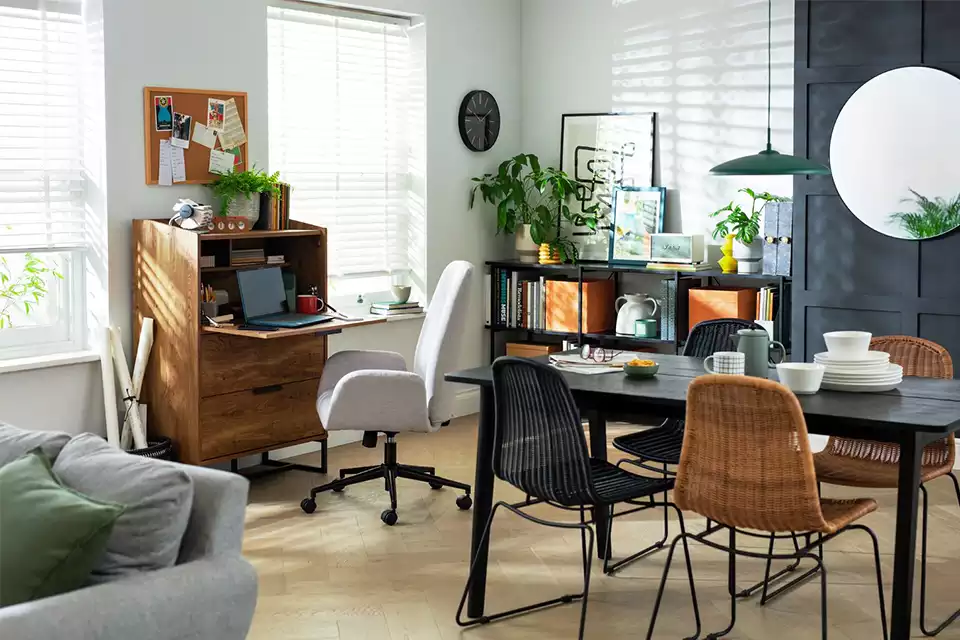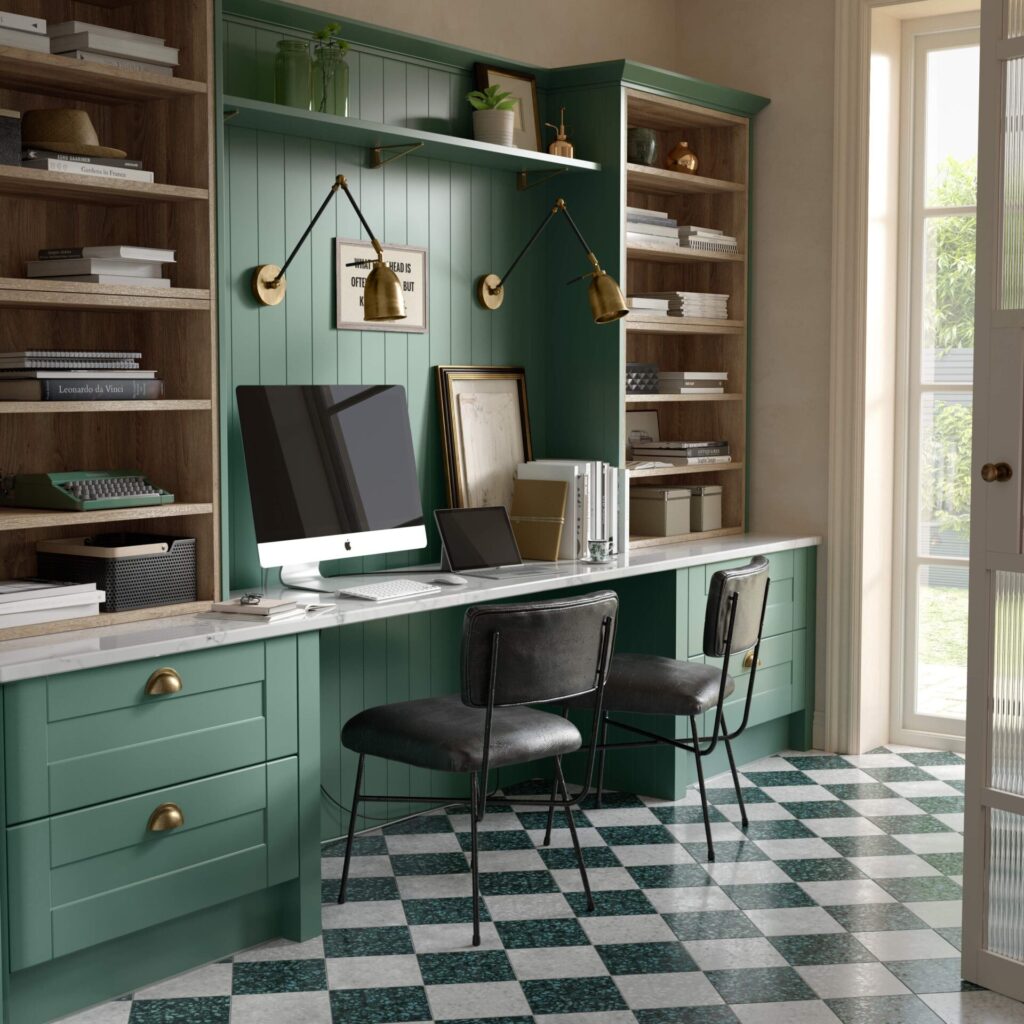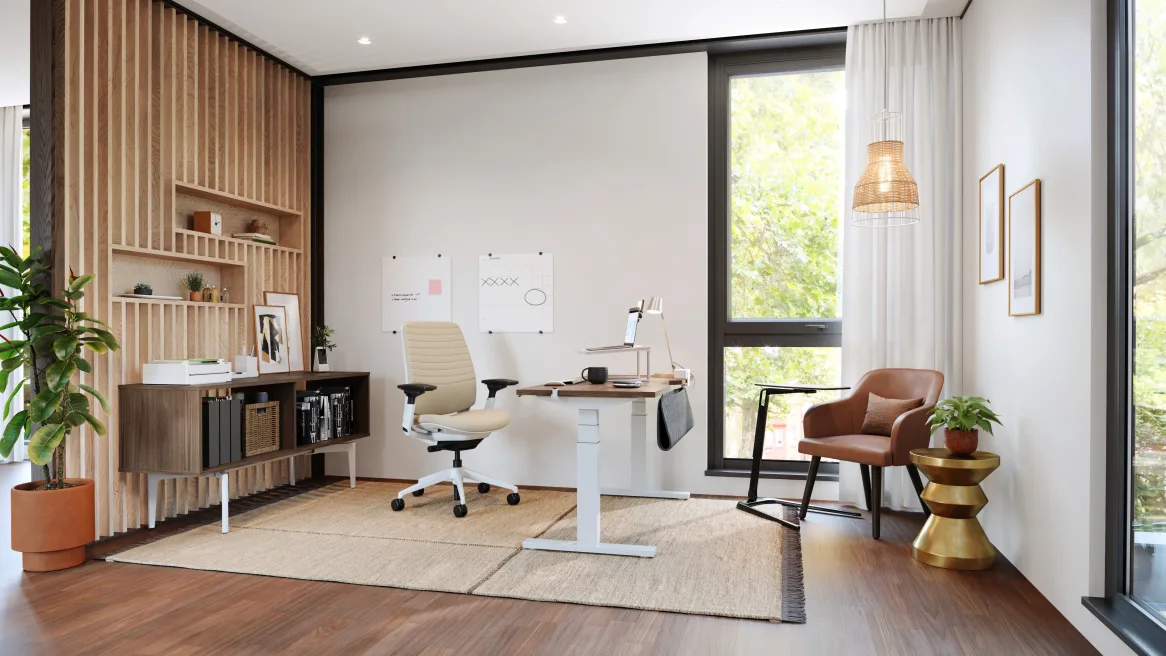The seismic shift towards the hybrid work model has roots in the evolving nature of work itself. Traditional office structures, once synonymous with professional life, have given way to a more flexible and adaptable paradigm. The hybrid model seamlessly integrates remote work with in-person collaboration, offering individuals and organizations the best of both worlds. Houses in Boca Falls are a great example of this hybridization where an individual has his own personal space similar to a cozy little office to work in his own home.
As we delve into this evolution, it’s essential to recognize the societal and technological factors driving this change. The digital age has not only connected us globally but has also democratized access to information. This democratization has fueled a demand for flexibility in how and where work gets done. The rise of the gig economy and freelance culture further emphasizes the need for a working model that transcends geographical constraints. Sometimes and in a literal sense, people in serious business need to have an overview of their work at any time even in another country, which can be provided by e-sim.
The hybrid model emerges as a symbiotic response to these dynamics. It acknowledges the significance of physical proximity for certain aspects of collaboration while embracing the freedom that remote work affords. In this evolution, the home office becomes a central player, requiring thoughtful design and strategic integration of technology to support this new way of working.
Designing a Dynamic Workspace

The concept of a dynamic workspace extends beyond the physical aesthetics of an office. It’s about creating an environment that adapts to the diverse tasks and challenges that the hybrid work model presents. Ergonomic furniture and proper lighting are foundational elements, but the design must also consider the psychological aspects of productivity.
Consider incorporating elements of biophilic design to bring nature into your workspace, fostering creativity and well-being. Personalization is another key aspect – curate your space with items that inspire and motivate you. These personalized touches contribute to a sense of ownership and belonging, vital for sustained focus and creativity.
Beyond the individual workspace, consider the concept of “activity-based working.” This approach tailors specific areas of your home to different types of tasks. Create zones for focused work, collaborative projects, and relaxation. This intentional design not only enhances productivity but also mirrors the versatility required in a hybrid work setting.
Cultivating a Productive Mindset
The productivity mindset in a hybrid work setting is a dynamic interplay of individual habits, well-being practices, and adaptability. A deeper exploration into this mindset reveals the importance of rituals in shaping the workday. Rituals act as anchors, signaling the beginning and end of work, and helping individuals transition seamlessly between professional and personal modes.
Mindfulness practices become crucial tools in navigating the challenges of a hybrid work environment. Incorporating brief meditation or relaxation exercises into your routine can significantly impact stress levels and improve overall focus. Recognize that breaks are not distractions but essential moments for rejuvenation, contributing to sustained creativity and problem-solving. This is also very useful because as the health clinic in Marietta GA says, sitting for a long time at the computer can negatively affect our health.
Active communication within a team takes on a nuanced dimension in a hybrid work scenario. Embrace video calls not just for official meetings but also for casual check-ins. These informal interactions recreate the spontaneity of in-person office conversations, fostering a sense of camaraderie and connection among team members. In this way, the productive mindset extends beyond individual practices to encompass a collective commitment to shared success. With the help of an excellent Internet service provider that manages IT services in San Antonio, users are provided with uninterrupted Internet traffic for long conversations without interference or fear of signal failure.
Technological Integration for Seamless Collaboration
The seamless collaboration facilitated by technology in a hybrid work model extends beyond the immediate convenience. It is a transformative force that reshapes the very nature of teamwork and project management. Cloud-based platforms, for instance, transcend physical limitations, enabling real-time collaboration and data accessibility from anywhere in the world. Due to their clients from various parts of the world, business lawyers in Dubai often take advantage of this technology in their practice.
The integration of virtual communication tools goes beyond the functional – it becomes a catalyst for innovation. Video conferences, collaborative documents, and instant messaging platforms facilitate the exchange of ideas in a way that transcends traditional office boundaries. This technological integration not only fosters efficiency but also contributes to a culture of continuous learning and adaptation. In this way, companies, through excellent M&A business advisors, can conclude their deals and have important conversations at any time.
Consider the role of augmented reality (AR) and virtual reality (VR) in shaping the future of collaboration. These technologies have the potential to create immersive virtual workspaces, allowing teams to collaborate as if they were in the same room. The evolving landscape of technological possibilities demands a proactive approach to stay ahead in the hybrid work environment.
Balancing Autonomy and Accountability

The delicate balance between autonomy and accountability is a cornerstone in the foundation of successful hybrid work dynamics. Autonomy, often celebrated for fostering creativity and independence, must coexist with a robust sense of responsibility. Setting clear expectations is not about stifling freedom but creating a framework within which individuals can thrive.
In a hybrid work scenario, transparent communication becomes the bridge between autonomy and accountability. Regular updates on work progress, sharing challenges, and seeking collaborative solutions build a culture of openness and trust. This transparency extends to acknowledging the limitations and learning curves associated with remote work, creating a supportive environment for growth. An excellent distance learning system is also education-oriented which favors homeschooling tutors in Bettendorf in working with their students.
The results-oriented approach necessitates a shift in perspective. Success is measured not merely by hours logged in but by the impact and quality of work delivered. This shift demands a paradigm where managers evaluate outcomes rather than the process, empowering individuals to take ownership of their projects. By embracing this new approach, the hybrid model becomes a space where autonomy and accountability coalesce into a harmonious and results-driven work culture. In their office buildings protected by an access control system from Philadelphia, corporations have a much easier insight into the work and commitment of their employees, but with a good hybrid work-from-home organization, this can also be achieved.
Navigating the Future of Work: Embracing the Hybrid Landscape
As we navigate the future of work, it’s evident that the hybrid model is not a temporary adjustment but a fundamental shift in how we approach professional life. The evolution from traditional office setups to dynamic home workspaces is intertwined with societal changes, technological advancements, and a redefinition of productivity. With the help of Colorado Springs SEO companies, their clients get excellent promotions with the benefits of working from home.
Crafting a home office that fosters success involves a continuous process of adaptation and innovation. The design of the physical workspace, cultivation of a productive mindset, technological integration, and the delicate balance between autonomy and accountability form the pillars of success in this dynamic era of work. Embrace the evolution, seize the opportunities it presents, and let your home office be the nucleus of your professional growth and fulfillment.
The Human Element in Virtual Collaboration
In the realm of virtual collaboration, it’s imperative not to lose sight of the human element. While technology seamlessly connects individuals across distances, the essence of personal connection remains irreplaceable. Embracing the hybrid landscape requires an intentional effort to infuse human touch into digital interactions.
Consider incorporating virtual team-building activities that transcend the formalities of work discussions. Online games, virtual coffee breaks, or even shared playlists create avenues for casual bonding, mirroring the camaraderie fostered in physical office spaces. Acknowledging personal milestones, be it birthdays or work anniversaries, through virtual celebrations enhances a sense of belonging and shared experiences. This is also acquired by children in organizations such as Readathon school fundraisers that provide reading and additional education through connecting with other children and socializing.
Moreover, the integration of emotional intelligence into virtual collaboration becomes a defining factor in team dynamics. Leaders must be attuned to the nuances of non-verbal communication in video meetings, fostering an environment where team members feel seen and heard. In this way, the hybrid work model becomes not just a convergence of tasks but a celebration of diverse perspectives and shared humanity.
Innovation in Flexibility: Beyond the 9-to-5 Paradigm
The hybrid work model ushers in an era of innovation not only in where we work but also in when we work. The traditional 9-to-5 paradigm, once a steadfast norm, undergoes a metamorphosis. Flexibility becomes a beacon guiding work hours, allowing individuals to tailor their schedules to their peak productivity periods.
Experimentation with alternative work schedules becomes a catalyst for increased job satisfaction and efficiency. Flextime, compressed workweeks, or even asynchronous work hours offer avenues for individuals to strike a balance that suits their unique lifestyle and circadian rhythms. This departure from rigid schedules not only accommodates diverse needs but also promotes a culture of trust, emphasizing results over clocked hours. This allows employees to organize their time better and go on trips more often, where they can rent a car in Beograd in order to move around Europe more easily.
The concept of the “results-driven workweek” emerges as a revolutionary approach. Instead of fixating on the number of hours spent working, the focus shifts to achieving predetermined goals within a specified timeframe. This results-oriented perspective not only boosts productivity but also liberates individuals from the constraints of conventional work hours, empowering them to prioritize tasks based on impact rather than arbitrary timeframes.
Environmental Consciousness in Hybrid Workspaces
As we shape the future of work, environmental consciousness emerges as a pivotal consideration in the design of hybrid workspaces. The physical separation from traditional office buildings prompts a reevaluation of the environmental impact associated with commuting and centralized workplaces. The hybrid model invites us to rethink our carbon footprint and explore sustainable practices in the way we work.
Individuals and organizations alike can adopt eco-friendly initiatives within their home offices. Incorporating energy-efficient lighting, utilizing recycled or locally sourced materials in furniture, and minimizing paper usage are small yet impactful steps. Additionally, fostering a culture of telecommuting reduces the carbon emissions associated with daily commutes, contributing to a collective effort in environmental sustainability. Through Google ads, individuals can become more educated about various ways of reducing energy production, which will contribute to them both economically and ecologically, but if your Google ads are suspended, first contact a professional.
Furthermore, the hybrid model allows for the emergence of “green co-working” spaces within residential neighborhoods. These shared workspaces, equipped with sustainable infrastructure and amenities, provide individuals with an alternative to traditional office setups. The combination of flexible work hours and environmentally conscious practices transforms the home office into a hub for both professional productivity and ecological responsibility.
Embracing Continuous Learning in the Hybrid Landscape

The evolution of work demands a parallel evolution in skills and competencies. The hybrid landscape thrives on adaptability and continuous learning as professionals navigate the intricacies of virtual collaboration, technological advancements, and shifting work paradigms.
Encourage a culture of continuous learning within the home office by providing access to online courses, webinars, and professional development resources. Platforms offering skill-based learning become valuable allies in upskilling and reskilling efforts. This commitment to ongoing learning not only enhances individual expertise but also fortifies teams to meet the challenges of an ever-evolving professional landscape. Organize the benefits of working from home to gain new knowledge, and commit to learning a foreign language that will benefit you the next time you pay for a cheap flight to a vacation spot.
The hybrid model becomes a canvas for the exploration of interdisciplinary skills. As individuals collaborate virtually across diverse teams and projects, the amalgamation of skills from different domains becomes a catalyst for innovation. The home office transforms into a dynamic learning environment, fostering a mindset that thrives on curiosity, resilience, and a proactive approach to acquiring new skills. Commit to decorating your space to make yourself feel more beautiful, which may include some of your DIY projects like the decorative wine glasses you learned to decorate from the online courses.
Conclusion: Pioneering the Future of Hybrid Work
In traversing the multifaceted terrain of the hybrid work landscape, it’s clear that we stand at the precipice of a transformative era. The home office, once a mere physical space, metamorphoses into a nexus of innovation, collaboration, and personal growth. The human element, flexibility, environmental consciousness, and a commitment to continuous learning become the guiding stars in this uncharted territory.
As we pioneer the future of hybrid work, let the home office be more than a utilitarian space – let it be a sanctuary for creativity, a laboratory for experimentation, and a platform for forging meaningful connections. Embrace the evolving dynamics, leverage the opportunities it presents, and let the home office become the epicenter of a professional journey that transcends traditional boundaries. The hybrid work model is not just a response to external forces; it’s a proclamation of our ability to adapt, innovate, and thrive in a future where work knows no bounds.

